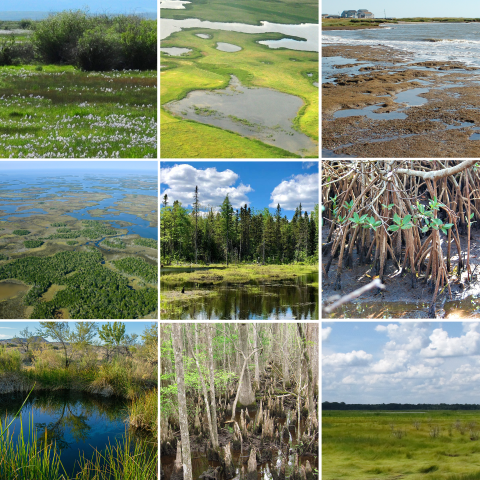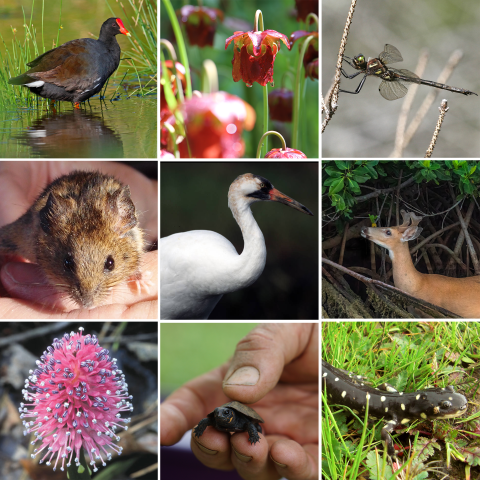“Nothing is more priceless and more worthy of preservation than the rich array of animal life with which our country has been blessed. It is a many-faceted treasure, of value to scholars, scientists, and nature lovers alike, and it forms a vital part of the heritage we all share as Americans [and] which we hold in trust to countless future generations of our fellow citizens.”
– Statement of President Richard Nixon upon signing the Endangered Species Act, December 28th, 1973
This December marks 50 years since the Endangered Species Act of 1973 was signed into law. Since that time, the U.S. Fish and Wildlife Service (Service) and its partners have worked to conserve, protect, and recover hundreds of wildlife species from the brink of extinction. There are currently 1,662 species listed as threatened or endangered spanning every U.S. state and territory. Recovery of a listed species requires a multi-faceted approach and often focusing on ways to protect the species, as well as its habitat.
Wetlands are one of the most productive and biodiverse habitats in the world. Although they cover only 6 percent of the Earth’s land surface, 40 percent of all plant and animal species live or breed in wetlands. Threatened and endangered species are no exception, with approximately half of all federally listed species in the United States being wetland dependent.
There are many different types of wetlands, and they provide important breeding, nesting, feeding, and overwintering habitat for a wide range of species. These habitats are comprised of both freshwater and saltwater, as well as brackish areas at the coastal boundary. Freshwater wetlands include open water habitats commonly referred to as ponds, as well as vegetated habitats such as bogs, fens, swamps, and wet prairies. Saltwater wetlands include salt marshes, shoals, and mangroves, as well as estuarine environments.
Threatened and endangered wetland dependent species are as diverse as the habitats they call home. They include highly specialized plants whose roots have adapted to live in wet soils, such as the meadow sweet pitcher plant found in the bogs of North and South Carolina. The Hawaiian Moorhen ('Alae 'Ula) lives in freshwater marshes, reservoirs, and wet meadows where they nest and feed on insects, mollusks, and grasses. Amphibians such as the California tiger salamander depend on freshwater ephemeral ponds to lay their eggs and begin their complex lifecycle. Mammals that are dependent on wetlands range in size from California’s tiny salt marsh salt marsh
Salt marshes are found in tidal areas near the coast, where freshwater mixes with saltwater.
Learn more about salt marsh harvest mouse to the Florida key deer that forages amongst mangrove forests.
Wetland dependent threatened and endangered species must compete for resources as their habitat quickly shrinks. According to the National Wetlands Inventory Program, the United States has lost more than 50 percent of its original wetland area since European colonization. Recent Status and Trends studies show a trend towards gain of open water habitats, such as ponds and lakes, and loss of vegetated wetlands. New ponds often associated with new developments and farming activities can be beneficial to species that prefer open water habitats, such as ducks and other waterfowl. However, the loss of vegetated wetlands imperils all species that rely on those habitats for survival.
The Endangered Species Act is more important now than ever, as species face continued threats from habitat destruction due to development, pollution, and climate change climate change
Climate change includes both global warming driven by human-induced emissions of greenhouse gases and the resulting large-scale shifts in weather patterns. Though there have been previous periods of climatic change, since the mid-20th century humans have had an unprecedented impact on Earth's climate system and caused change on a global scale.
Learn more about climate change . The historic loss of wetlands and their importance to a wide range of species highlights the importance of preserving or restoring the remaining 50 percent of wetland habitats, to make them viable habitat for the species that depend on them.





